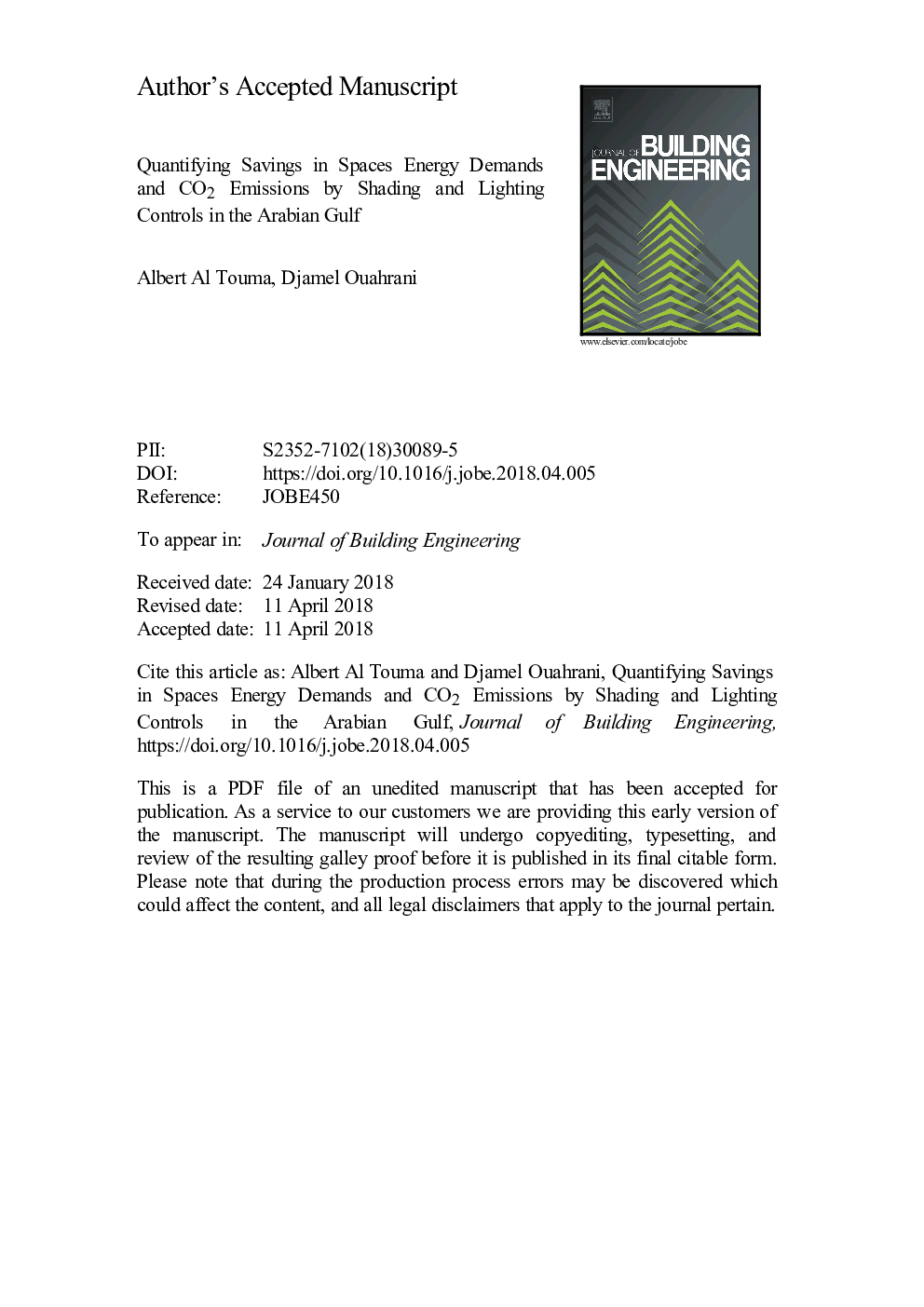| Article ID | Journal | Published Year | Pages | File Type |
|---|---|---|---|---|
| 6749921 | Journal of Building Engineering | 2018 | 34 Pages |
Abstract
A simulation model of an office space with a fully-glazed façade and external blind shading device in one predetermined orientation was developed and validated experimentally, Upon its validation, shading and lighting controls were applied. Results have shown that shading control was singlehandedly able to reduce the space total energy demand by 11.6% in north-oriented offices and 24.8% in east-oriented offices, thus potentially saving up to 24.5â¯kg of CO2/m2 annually. Once lighting control was incorporated, reductions were enhanced to 14.1% in north-oriented offices and 28.3% in east-oriented offices, consequently saving up to 27.9â¯kg of CO2/m2 annually. The simple installation of shadings on offices and the adoption of shading and lighting controls present a practical mitigation to both new and existing buildings that not only provides more comfortable indoor environment and saves energy, but also reduces hazardous CO2 emissions considerably in developing countries.
Related Topics
Physical Sciences and Engineering
Engineering
Civil and Structural Engineering
Authors
Albert Al Touma, Djamel Ouahrani,
